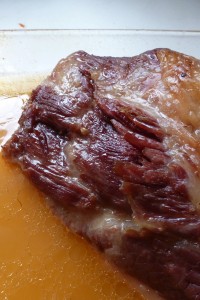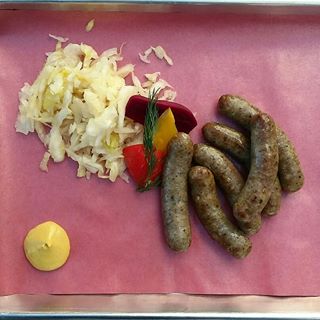
Nürnberger Rost-bratwurst: the little sausages with the big name. “Nürnberger” means from Nuremburg. “Rost” means roasted, as they are usually grilled over an open fire (often charred quite a bit actually). And “Bratwurst” of course is a style of fresh sausage.
Their most obvious trait is their diminutive size: they are usually slender and about three inches long. For this reason one typically consumes many in one sitting. Actually in Nürnberg they are always served in multiples of three, say, three of them on a bun (called Drei im Weggla) or six on a plate, with mustard and sauerkraut.

Exact recipes vary widely, but Nürnberger Rostbratwurst are flavoured with typical Bavarian sausage spices like mace, marjoram, white pepper, and lemon … Continue reading.


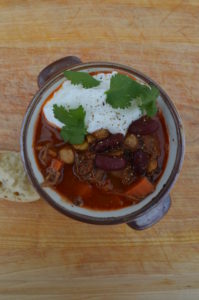
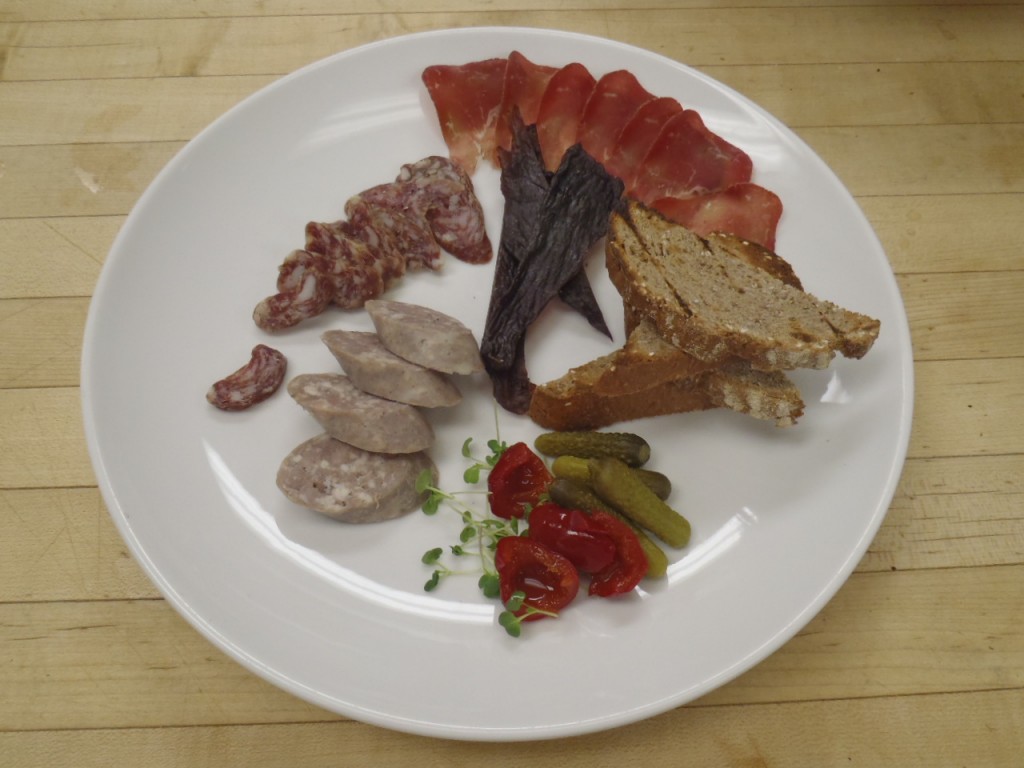
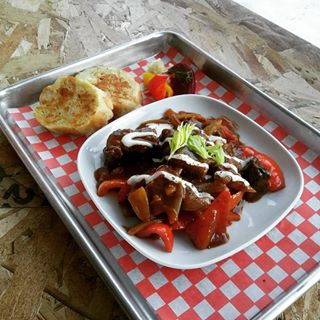 Goualsh is a beef stew originally from Hungary but eaten all over Central Europe. It is the kind of preparation that Europeans will fight to the death over. Matters like whether it is properly called a stew or a soup, whether it contains tomatoes, or potatoes, or what starch it is served with (if any) often become violent. It is estimated that 12 Europeans are killed every year in goulash-related arguments.[1]
Goualsh is a beef stew originally from Hungary but eaten all over Central Europe. It is the kind of preparation that Europeans will fight to the death over. Matters like whether it is properly called a stew or a soup, whether it contains tomatoes, or potatoes, or what starch it is served with (if any) often become violent. It is estimated that 12 Europeans are killed every year in goulash-related arguments.[1]
